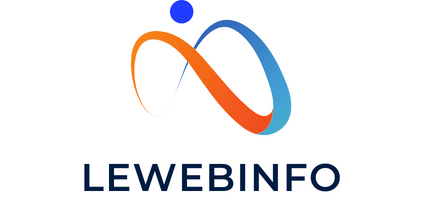How Is AI Being Leveraged for Early Disease Outbreak Detection?

As we navigate the complexities of modern healthcare and public health issues, the power of data and digital systems has never been more evident. The ongoing global pandemic has underscored the need for more sophisticated, responsive systems capable of predicting, detecting, and managing outbreaks of infectious diseases. In this context, the role of artificial intelligence (AI) has emerged as a game-changer.
From academic institutions like universities to healthcare organizations, the use of AI in public health presents a novel approach to predict and manage health crises. This article explores how AI is being leveraged for early disease outbreak detection, focusing on the use of data sources like Google Scholar, PubMed, PMC, and CrossRef, the potential of machine learning in health crisis management, and its practical applications in real-world scenarios.
En parallèle : What’s the Potential of Smart Pills in Enhancing Patient Compliance with Medications?
Google Scholar, PubMed, PMC, and CrossRef: AI and Health Data
In the world of AI-driven disease detection, data is the key. Multiple sources offer rich databases that AI algorithms can sift through to make predictions and detect patterns. Notably, Google Scholar, PubMed, PMC, and CrossRef are leading sources of data.
Google Scholar is a vast database of scholarly literature across many research disciplines. It provides a broad spectrum of articles, theses, books, and conference papers from academic publishers, professional societies, universities, and other scholarly organizations. AI can utilize this vast array of information for disease detection and prediction.
A voir aussi : Exploring the enigma of the gods mystery box revealed
PubMed, a free search engine primarily accessing the MEDLINE database of references and abstracts on life sciences and biomedical topics, is another robust resource. With numerous articles related to various diseases, it offers a valuable data pool that AI can exploit for early disease detection and other healthcare applications.
PMC or PubMed Central is a free digital repository that archives publicly accessible full-text scholarly articles in the biomedical and life sciences. The rich, detailed content in these articles can fuel AI systems for more sophisticated disease prediction and detection.
CrossRef serves as a digital hub for scholarly publications’ metadata. By linking data about scholarly articles, such as DOIs (Digital Object Identifiers), CrossRef can feed AI algorithms with essential information to support disease outbreak detection.
By feeding these data sources into AI algorithms, we can unlock the potential for early disease outbreak detection, thereby enhancing public health responses.
The Potential of Machine Learning in Health Crisis Management
Machine learning, a subset of AI, involves teaching computers to learn from and interpret data. It has incredible potential in managing health crises, especially in early disease outbreak detection.
Machine learning can mine health data from various sources, learn from this data, and predict potential outbreaks based on patterns and trends. This ability to ‘learn’ and ‘predict’ makes it a powerful tool for managing health crises.
For instance, during the COVID-19 pandemic, machine learning models were developed to predict the spread of the virus. Utilizing data on previous infections, travel patterns, and public health interventions, these models provided valuable insights to policymakers to make informed decisions.
Moreover, machine learning can help identify high-risk areas and populations, enabling healthcare providers to prioritize resource allocation and intervention strategies. This proactive approach can significantly improve the healthcare system’s response to an outbreak.
AI in Clinical Applications: Real-world Scenarios
Let’s explore some real-world scenarios where AI has been leveraged in clinical settings for early disease detection.
In recent years, AI has demonstrated its effectiveness in predicting influenza outbreaks. By analyzing search engine queries and social media posts, AI models can predict flu trends with remarkable accuracy. Google Flu Trends and Flu Near You are prime examples of such initiatives.
Another fascinating application of AI is in the detection of potentially infectious diseases in patients. AI algorithms have been developed to analyze electronic health records (EHRs) and identify patients who may be at risk of certain infections. This enables medical professionals to undertake early intervention measures.
The COVID-19 pandemic brought AI to the forefront, with several AI-driven initiatives making headlines. An AI platform developed by BlueDot, a Canadian startup, successfully flagged the COVID-19 outbreak in Wuhan several days before the World Health Organization issued its public warning.
The Role of Universities in Advancing AI for Disease Detection
Universities play a crucial role in advancing AI for disease detection. By fostering a culture of research and innovation, universities can drive significant progress in this field.
Many leading universities are already pioneering research in AI and its applications in healthcare. For instance, Stanford University has developed an AI tool that can detect pneumonia in patients more accurately than human radiologists. Similarly, researchers at the University of Nottingham have developed a machine learning algorithm that can predict a patient’s risk of developing certain diseases.
In conclusion, AI is transforming the landscape of disease detection and public health, powered by rich databases, advanced machine learning techniques, and pioneering research in academic institutions. In the face of future health crises, AI presents a promising solution for early detection and effective crisis management. The journey has just begun, and the potential is enormous. As AI continues to evolve and grow, it promises to usher in a new era of public health management that’s more responsive, effective, and resilient.
While we’ve made significant strides, this is just the beginning. As AI continues to evolve and grow, we stand on the brink of a new era in public health management – an era guided by data, powered by intelligence, and driven by the relentless pursuit of better health outcomes for all.
The Promising Future of Deep Learning in Infectious Diseases Detection
The progress in deep learning is creating new opportunities for the early detection of infectious diseases. Deep learning, a subfield of machine learning, relies on artificial neural networks to learn from large amounts of data, enabling it to recognize patterns and make predictions with high accuracy.
For instance, in the area of radiology, deep learning algorithms are being used to interpret medical imaging data in real-time. This has been especially beneficial in patient care, with the potential to detect diseases such as pneumonia or lung cancer at early stages. The technology is also being used in pathology to examine tissue samples and detect abnormalities that might indicate serious diseases like cancer.
Deep learning is also being utilized to analyze electronic health records (EHRs) to predict disease outbreaks. The language models it employs can identify underlying patterns in the EHRs, providing valuable insights into patient care and decision making. A study published on PubMed showed that deep learning models could accurately predict infectious disease outbreaks from EHRs.
The Google Scholar database is filled with studies demonstrating the effectiveness of deep learning models in disease detection. Several articles show how deep learning has been used to predict the spread of diseases like dengue fever and Zika virus.
In essence, deep learning offers incredible potential in the realm of infectious disease detection. It promises to transform patient care by facilitating real-time decision making and early detection of diseases.
Harnessing AI for Robust Public Health Infrastructure
As we’ve seen, artificial intelligence has tremendous potential in boosting our ability to detect and manage disease outbreaks. However, this potential can only be fully realized with a robust public health infrastructure that can support and integrate AI systems effectively.
Firstly, there is a need for a robust data infrastructure. The effectiveness of AI systems, from machine learning to deep learning, largely depends on the availability of comprehensive, high-quality data. This means we need robust systems for data collection, management, and sharing, with strict measures to ensure data privacy and security.
Secondly, an effective public health infrastructure should also include comprehensive training programs for health workers. They should be adequately trained to use AI tools and interpret their outputs. This is essential to ensure that the AI-driven insights are correctly utilized in decision making.
Lastly, the infrastructure should also include strong regulatory frameworks for AI. These frameworks should guide the development and use of AI tools in healthcare, ensuring that they are safe, effective, and ethical.
In conclusion, harnessing AI for disease outbreak detection requires more than just advanced technologies. It also necessitates a robust public health infrastructure that can effectively support and integrate these technologies.
Conclusion: Embracing AI for a Healthier Future
When we look at the convergence of artificial intelligence, machine learning, and deep learning with healthcare, it’s clear that we are on the brink of a revolution. The use of AI in disease outbreak detection is not just a fascinating concept – it’s a practical solution that’s already showing results.
The rich databases from sources like Google Scholar, PubMed, PMC and CrossRef are providing the necessary fuel for AI to learn, predict, and make informed decisions. Universities and other academic institutions are pioneering research that’s pushing the boundaries of what’s possible in AI and healthcare.
With the right public health infrastructure in place, AI has the potential to transform disease detection, patient care, and ultimately, our overall health outcomes. It promises real-time decision making, early detection, and effective management of disease outbreaks. As we move into this new era, it’s clear that embracing AI will be key to building a healthier future for all.
But the journey has just started. As AI continues to advance and evolve, the potential is immense. We are standing at the threshold of a new era in public health management – an era powered by data, driven by intelligence, and committed to achieving better health outcomes for all. In the face of future health crises, AI is our most promising ally.
